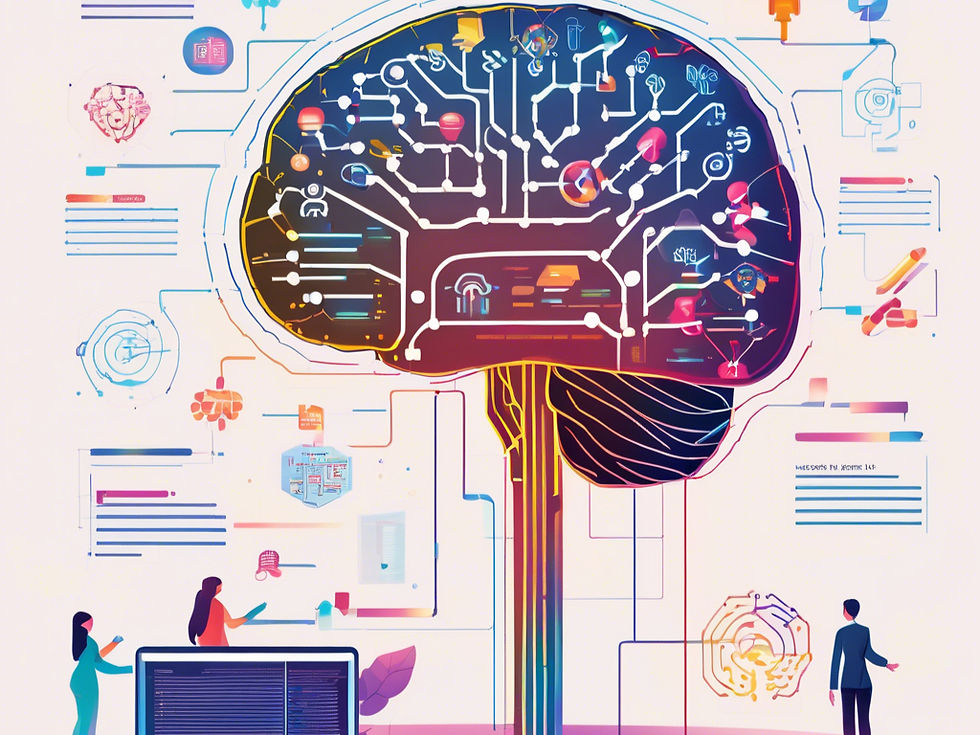How AI Algorithms Work & 5 Tips for Training Your AI
- Lily
- Aug 29
- 3 min read
Artificial Intelligence (AI) is no longer just a futuristic concept—it’s a powerful tool that drives innovation across industries. From digital assistants to predictive analytics, AI algorithms power the systems we interact with every day. But how do these algorithms actually work, and more importantly, how can businesses train them effectively?
In this guide, we’ll break down how AI algorithms function and share five practical tips for training AI models, so businesses can get the most value out of them.

What Are AI Algorithms?
At their core, AI algorithms are sets of instructions that allow machines to process data, learn patterns, and make decisions with little or no human input. Unlike traditional computer programs that follow fixed rules, AI algorithms improve over time as they are fed more data.
For example:
A spam filter learns which emails are junk by analysing patterns in flagged messages.
A recommendation engine (like Netflix or Amazon) studies past behaviour to suggest what users might want next.
A Digital Marketing Company in UK might use AI algorithms to optimise ad targeting or predict customer trends.
How Do AI Algorithms Work?
AI algorithms typically work in three main stages:
1. Data Collection
AI needs data to learn. This could be text, images, videos, or customer interactions. The quality and quantity of data are critical for accuracy.
2. Pattern Recognition
The algorithm identifies relationships in the data. For example, an AI model trained on thousands of cat images will begin to recognise common features like whiskers and ears.
3. Decision-Making
Once trained, the AI applies what it has learned to new data. It can classify, predict, or even generate content.
Types of AI Algorithms
Supervised Learning: The algorithm is trained on labelled data (e.g., identifying whether an email is spam or not).
Unsupervised Learning: The system finds hidden patterns in unlabelled data (e.g., customer segmentation).
Reinforcement Learning: AI learns through trial and error, like training a robot to walk.
5 Tips for Training Your AI Effectively
1. Start with Clean, High-Quality Data
Garbage in, garbage out. Ensure your dataset is accurate, well-structured, and representative of real-world scenarios.
2. Choose the Right Algorithm
Different problems need different algorithms. For example, neural networks are great for image recognition, while decision trees may be better for structured data.
3. Avoid Overfitting
If your AI only performs well on training data but fails in the real world, it’s overfitted. Use techniques like cross-validation to ensure balanced learning.
4. Continuously Train and Update
AI is not a one-time project. Keep feeding your algorithm fresh data to adapt to changes in customer behaviour, trends, or technology.
5. Monitor for Bias
Bias in data leads to biased results. Always check your training data for diversity and fairness, especially when dealing with sensitive decisions.
Why It Matters for Businesses
AI isn’t just a buzzword—it’s a competitive advantage. From automating repetitive tasks to boosting customer experience, companies that adopt AI early gain a strong edge. For example, a Web Development Company in UK can use AI to build smarter websites that personalise user journeys, while a Digital Marketing Company in UK might harness algorithms for better audience targeting.
Conclusion
AI algorithms are powerful tools that can transform how businesses operate, but their effectiveness depends on how well they are trained. By focusing on quality data, the right algorithm, and continuous improvement, businesses can unlock AI’s full potential.
If you’re looking to leverage AI in your business strategy, partnering with experts in AI and digital solutions can accelerate your growth.



Comments